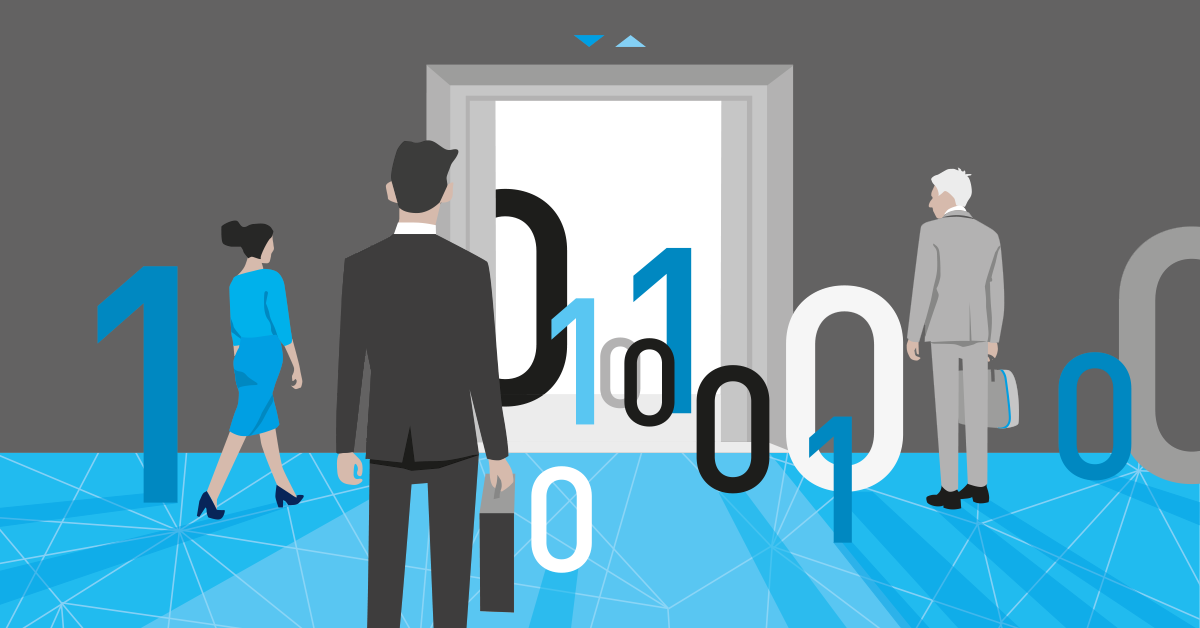What constitutes the office of the future? This is something we would like to explore in this article, which deliberately places itself in a line with the many other articles that we publish on the subject of IoT. Because IoT is not only a detached concept of how an intelligent house should look like; IoT encompasses almost every area of our lives and therefore also our jobs.
The world of work is changing. Today it is more global, networked, mobile and knowledge-intensive than just a few years ago. This not only creates new companies, business areas and models, but also new jobs and professions. The way we work and how we monitor our work will definitely stay affected.
Technology and Architecture in Harmony
Several studies have come to the conclusion that pretty soon half of all jobs in Europe could become obsolete through automation. The Institute for Labour Market and Occupational Research (of the Federal Employment Agency of Germany), on the other hand, is reassuring: In hardly any profession are humans completely replaceable. And the Centre for Empirical Economic Research, too, believes that the next 10 to 20 years will see only twelve percent of jobs threatened as a result of technological change. The prognosis of economists in Munich, on behalf of the Federal Ministry of Labour and Social Affairs (BMAS), on the effects of digitization on the economy and work, is different. They assume that accelerated technical progress will ultimately create more jobs than it will destroy. In concrete terms, accelerated digitization could create a quarter of a million additional jobs by 2030. But once it has been clarified that we will continue to work in the future, the question remains unanswered as to what this work will look like.
In order to attract the brightest minds, who are less and less attracted by salary increases and promotions, companies are increasingly relying on a modern, collaborative working environment with a feel-good atmosphere. They know that these employees only develop their full potential when they feel comfortable. The companies were inspired by the numerous coworking spaces, which can now be found everywhere; according to a report by Fast Company, their number has doubled since 2008. Accordingly, the architecture is also conceived to promote proximity to and exchange with others, allow informal communication and encourage "random" encounters.
Instead of static office spaces, there are workspaces and working landscapes that are characterised by their flexibility. Employees can decide freely whether they want to work in the open space, at the standing desk, in comfortable seating areas or in a meeting room. What should not be forgotten, of course: Flexibility at work requires IT to have the basics ready. Best example: Anyone who wants to work flexibly with a laptop or tablet depends on having the same good WLAN available everywhere. But at Paessler, we don't just take care of a good WLAN that is stable everywhere. We also monitor some details of our daily office routine, including the function and values of our various printers. At the last internal announcement, there was a lot of discussion about how many pages we print (and how many of them in color), and whether this (already a very low value) could be further improved. We have noticed that the environment is close to our employees' hearts. That's why we attach great importance to paperless working (without at the same time cramping our colleagues, who simply find it easier to work with paper).

The Victory of Sustainable Thinking
The work of the future is more sustainable togetherness than wasteful individuality. Not only do ties disappear from the office landscape, individual offices are becoming increasingly rare and, if at all, only used as resting places. But when twenty people suddenly sit together in a large room, other problems arise, which can be counteracted with appropriate sensors. In Smart Home and Smart Building concepts, sensors are being used that can measure and regulate light (or incidence of light). Or air quality: With a modern air quality sensor (which can be installed in different areas of an open-plan office or working space) the Modern Office is extended by a room air monitoring system. There are already numerous sensors for this purpose that detect a large number of volatile organic compounds (VOCs) and have been specially developed for indoor air monitoring. Connected to a microcontroller, the sum of the concentrations of the individual compounds, also called Total Volatile Organic Compound (TVOC), as well as the equivalent CO2 level (eCO2) can be read out. Some employees in the Paessler HQ already have air sensors in the office. The result: these employees pay great attention to the quality of their indoor air and very rarely forget to let fresh air into the room in time. Now, in order to get a comparison, we have set up the identical sensors in the offices of employees who have not yet been aware of all this. We have found that there is considerably poorer air in this area and that easy countermeasures can be taken to combat symptoms such as fatigue.


Are There Any Limits? Not Really…
The question of what can be monitored, displayed and improved in a modern office is laborious. The question should rather be: What is impossible to monitor? And the simple answer: Nothing; at least nothing that we can think of when writing this article. Sensors can be attached to windows and doors. Heating and electricity costs can be reduced (the first step would be to ask how many employees do not shut down their laptops and PCs at night). Room temperature, humidity of indoor plants, the time of the next public transport, this list could be made much longer.
Whether in one's own home, in any building or in the office: the principle applies for the next 20 years that, with the right tools, everything that can be monitored will sooner or later be monitored.
 Published by
Published by 












